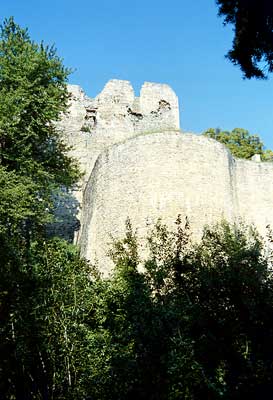 |
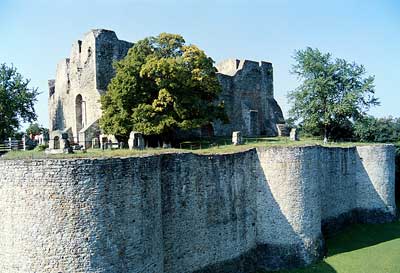
Neamt Citadel |
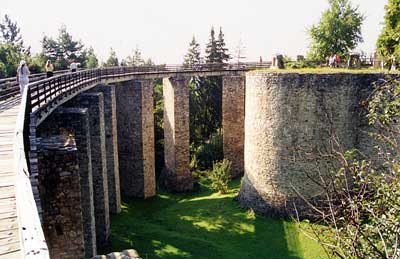 |
The next morning, we stumbled down into the hotel's restaurant looking for coffee (or in Pam's case, tea). There are those of us who just don't deal well with the world in the morning until we've had our little wake-up fix of caffeine. Unfortunately, to the Romanians, coffee is something you have after a meal. So, we had to keep badgering the waitress. "Yes, we would like our coffee now please." We began to speculate that they were out somewhere harvesting the beans. Eventually we got our java, but it was Turkish style, in those little bitty cups, and had that layer of grounds sludge on the bottom. Invariably, you get a mouthful of that as you get near the bottom...at least it wakes you up.
We also had some very tasty little triangles of local cheese that had been battered in egg and flour and then deep-fried. I keep meaning to try that in my kitchen, but I never seem to get around to it.
 |

Neamt Citadel |
 |
| Afterwards, we came barreling down the hill (much easier the other way), and spent a little time wandering around Targu Neamt, shopping and such. We went into a bank to change some dollars into lei, but found the bank was out of lei. | 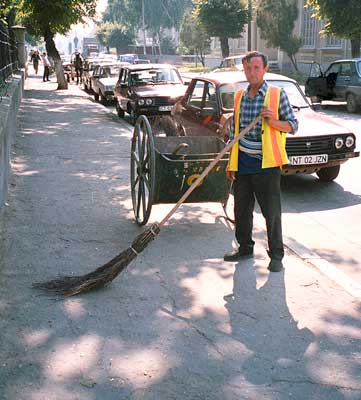 A mix of the modern and the traditional: a street sweeper in Targu Neamt Photo by Kathy Lindquist |
The rest of the day was monasteries. Painted Orthodox monasteries, to be exact. Moldavia is full of them, mostly built between the 15th-16th centuries. "Painted" doesn't mean they chose exterior latex over aluminum siding, it refers to the elaborate murals of religious scenes painted on the outside of the church. Some of these paintings are in excellent shape, others are nearly gone. There is a big restoration effort underway in Romania to stabilize the paintings that are in trouble. We saw people working at this at a couple of places we visited.
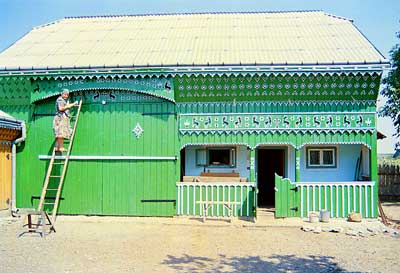 |
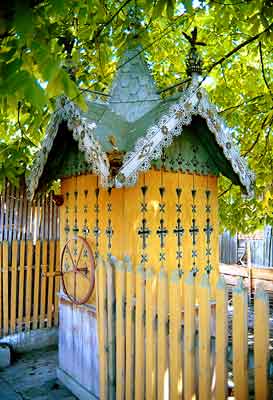 An ornate housing around a well |
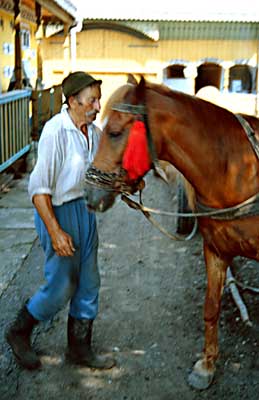 |
PAGE: 1 | 2 | 3 | 4 | 5 | 6 | 7 | 8 | 9 | 10 | 11 | 12 | 13 | 14